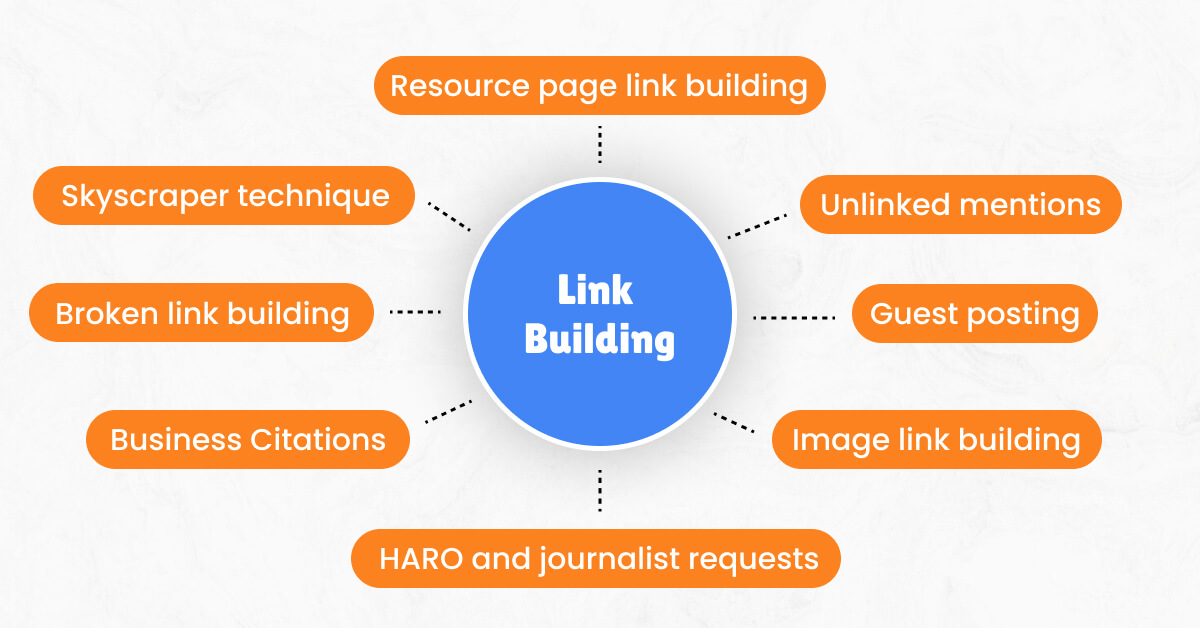
Link building is the process of encouraging other websites to link to pages on your site. The goal is to enhance your pages’ “authority” in Google’s eyes, helping them rank higher and attract more search traffic.
Think of them as votes of confidence – when other websites link to your page, it helps Google learn that your content holds value.
In simple terms, the more high-quality backlinks your page accumulates, the better it’s likely to rank on Google. To surpass a competitor’s page in rankings, you’ll generally need to secure more links than they have.
Of course, this is an oversimplification. Achieving the top spot on Google involves much more than just gathering links, as Google considers numerous ranking factors. However, backlinks remain a significant factor that directly impacts your search rankings. And that’s why so many businesses hire digital agency services in Australia for link building and SEO.
How Can You Build Links?
The most common link-building strategies generally fall into one of four categories –
- Adding Links: This is when you visit a website and manually add your link, like in forums or comment sections.
- Asking for Links: Here, you reach out to relevant website owners via email, requesting them to link to your content.
- Buying Links: Similar to asking for links, but with the added incentive of offering payment or another form of compensation.
- Earning Links: It would involve creating content so valuable and compelling that people naturally want to link to it.
Which Links Make the Most Impact?
Not all links are equal – they vary in their influence on your page’s search ranking. While no one knows exactly how Google evaluates each link, there are five key factors every SEO company will keep in mind –
- Authority: The credibility and trustworthiness of the linking site.
- Relevance: How closely the linking site’s content relates to your page.
- Anchor Text: The specific text used in the hyperlink to your page.
- Placement: Where the link appears on the page (e.g., in the main content versus the footer).
- Destination: The specific page on your site that the link points to.
Best Practices for Link Building
There are countless link-building strategies out there, but not all of them are worth your time. Some are highly effective, while others are outdated and unlikely to yield results. Here’s what’s currently working well in the industry –
#1 – Replicate the Backlinks of Your Competitors
If a site is linking to your competitor, they might be willing to link to you as well. A smart way to start is by analysing who’s linking to your competitors’ homepages and pages with the most links. These links are often to the business itself, not a specific page, making them potential targets for your own outreach.
Competitors can be a treasure trove of link opportunities. As you dig into their backlinks, you’ll likely spot patterns that you can adapt and apply to your own site. This strategy can help you build a strong backlink profile by leveraging what’s already working in your industry.
#2 – Reach Out to Websites
So, you’ve nailed down your keyword research and identified a specific page you need to rank high on Google for a particular keyword. Now, it’s time to build links to that page.
Where do you start?
A great first step is to analyse the top-ranking pages for your chosen keyword. Take a close look at where they’re getting their links—this gives you a clear idea of which sites might be open to linking to your content.
Next, expand your search by finding websites that have already mentioned your topic.
Now, searching for “meditation app” might yield over 100,000 results. To make this list more manageable, you can apply filters to narrow down the results to those most relevant to your needs:
- Language: English (or your target language)
- Website Traffic: At least 1,000 monthly visitors
- Domain Rating: 30 or higher
- Explicit Results: Filtered out
- Other Filters: One page per domain, excluding homepages, and subdomains
Doing so will leave you with a more focused list—far easier to work with. Now, your task is to review these pages and reach out to the site owners who might be interested in linking to your content.
However, be prepared for a low success rate. To increase your chances, it’s smart to start building relationships with these site owners before you ask for a link. Reach out while you’re still creating your content. Ask for their opinions, quotes, or offers to feature their work. It will show that you value their input and might pique their interest in what you’re working on.
#3 – Create Linkable Assets
“Linkbait” or “linkable assets” are terms used for content specifically designed to attract backlinks. These assets come in various forms, such as:
- Industry surveys
- Research studies
- Online calculators and tools
- Awards
- Tutorials and how-to guides
- Coined terms and definitions
- Infographics
How to Create Your Own Linkable Assets?
To implement this strategy, start by brainstorming ideas for a link-worthy page. Here’s how you can get started:
- Survey Your Industry: Can you gather valuable insights by surveying professionals in your field?
- Analyse Your Data: Is there meaningful data your business can analyse and share?
- Experiment and Share: Could you conduct an interesting experiment and publish the results?
- Develop a Tool: Does your industry need a new, useful online tool?
If you’re struggling to come up with ideas, take a look at what your competitors are doing. See what types of linkable assets have worked for them and consider how you can create something similar or better.
#4 – Promote Your Content
Even the best linkable assets won’t attract backlinks if no one knows they exist. So, once you’ve created your content, make sure you’re spreading the word through various channels. While there are countless ways to promote your content, let’s focus on three powerful tactics that can make a significant impact –
- Advertising: It’s a straightforward method to get your content in front of thousands of relevant people quickly. However, it does require a substantial budget. Whether through social media ads, Google Ads, or sponsored content, advertising can give your content the boost it needs to reach a broader audience.
- Influencer Outreach: Identify key thought leaders in your industry and reach out to them when you publish something noteworthy. If they find your content valuable, they might share it with their followers, significantly expanding your reach.
- Building a Following: Start by growing an email list if you haven’t already, and stay active on platforms like Twitter and LinkedIn. Regularly publishing high-quality content will naturally attract followers. Over time, some of these followers may link to your content, amplifying its reach even further.
#5 – Start Writing Guest Posts
Guest posting can be a double-edged sword in the world of SEO. Some professionals look down on it, especially when it’s done excessively or in a spammy way. However, when done right, it remains one of the most effective methods for building high-quality backlinks.
To get your content featured on leading blogs in your industry, you need to pitch a compelling article idea.
Another effective, yet lesser-known, tactic is to identify underperforming articles on the blog you want to contribute to and offer to rewrite them from scratch. If you can convincingly argue that your rewrite will improve the article, rank higher on Google, and attract more traffic, your pitch is likely to be welcomed.
By approaching guest posting with these strategies, you can build valuable links while providing real value to the blogs you contribute to.
Wrapping Up
When I explain link building to someone new, I like to use a simple metaphor: Making friends is tough if you’re not interesting or generous.
Before you can start building links, it’s crucial to acknowledge that the success of your strategy will almost entirely depend on your content. If it doesn’t offer something valuable or engaging to the audience, why would anyone want to link to it?
Because of this reason, most SEO professionals will ask you to avoid chasing links actively. Instead, they focus on creating content that’s truly “link-worthy” and sharing it with the right people. When you do this, the links follow naturally.
